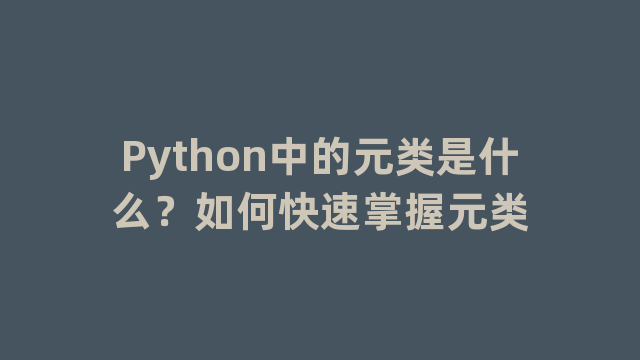
作为一个的程序单元,学习编程的人应该都需要掌握。今天小编为大家带来元类的讲解。
Python2创建类的时候,可以添加一个__metaclass__属性:
class Foo(object): __metaclass__ = something… […]
</pre> 如果你这样做,Python会使用元类来创建Foo这个类。Python会在类定义中寻找__metaclass__。如果找到它,Python会用它来创建对象类Foo。如果没有找到它,Python将使用type来创建这个类。 在Python3中语法改变了一下: class Simple1(object, metaclass=something…): […] <pre class="brush:js;toolbar:false">
本质上是一样的。拿一个元类例子分享一下:
class HelloMeta(type): def __new__(cls, name, bases, attrs): def __init__(cls, func): cls.func = func def hello(cls): print ‘hello world’ t = type.__new__(cls, name, bases, attrs) t.__init__ = __init__ t.hello = hello return t class New_Hello(object): __metaclass__ = HelloMeta
</pre> New_Hello初始化需要添加一个参数,并包含一个叫做hello的方法: In : h = New_Hello(lambda x: x) In : h.func(10), h.hello() hello world Out: (10, None) <pre class="brush:js;toolbar:false">
PS: 这个例子只能运行于Python2。
以上就是Python中元类的详解。
神龙|纯净稳定代理IP免费测试>>>>>>>>天启|企业级代理IP免费测试>>>>>>>>IPIPGO|全球住宅代理IP免费测试





